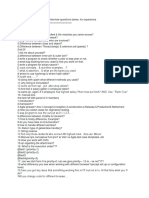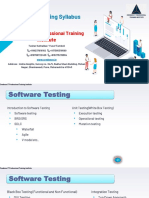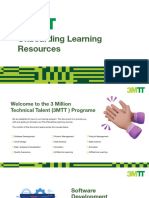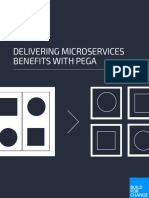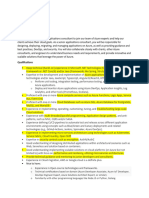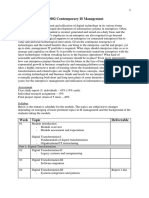0% found this document useful (0 votes)
21 views26 pagesSoftware Testing Masters Program
The document outlines a Software Testing Master Program offered in Chennai, which includes courses in Manual Testing, Java, SQL, and Selenium with Java, along with several add-on courses. It provides details on course fees, average salaries, and hiring companies, as well as a comprehensive curriculum covering various testing methodologies and tools. The program also includes training in Selenium with Python, Cucumber, DevOps, and other relevant skills for software testing professionals.
Uploaded by
gowthem245Copyright
© © All Rights Reserved
We take content rights seriously. If you suspect this is your content, claim it here.
Available Formats
Download as DOCX, PDF, TXT or read online on Scribd
0% found this document useful (0 votes)
21 views26 pagesSoftware Testing Masters Program
The document outlines a Software Testing Master Program offered in Chennai, which includes courses in Manual Testing, Java, SQL, and Selenium with Java, along with several add-on courses. It provides details on course fees, average salaries, and hiring companies, as well as a comprehensive curriculum covering various testing methodologies and tools. The program also includes training in Selenium with Python, Cucumber, DevOps, and other relevant skills for software testing professionals.
Uploaded by
gowthem245Copyright
© © All Rights Reserved
We take content rights seriously. If you suspect this is your content, claim it here.
Available Formats
Download as DOCX, PDF, TXT or read online on Scribd
/ 26
















